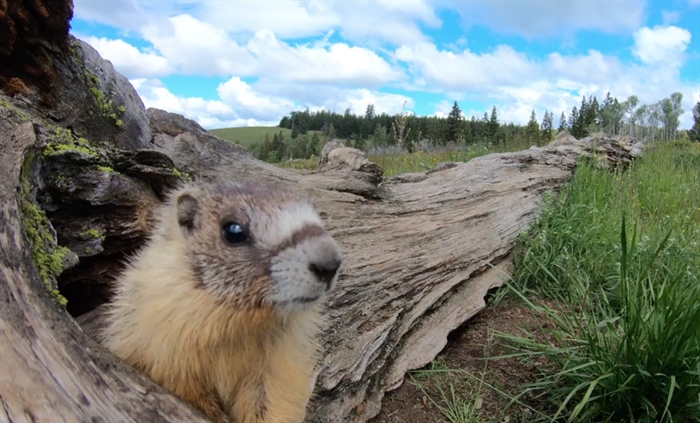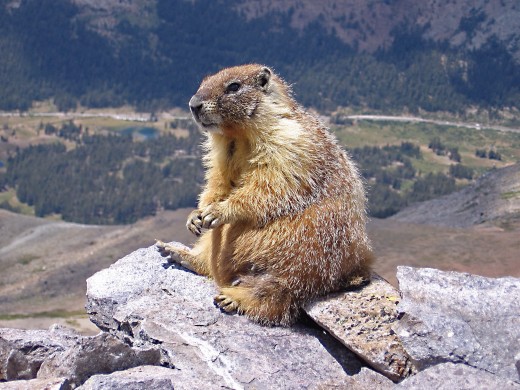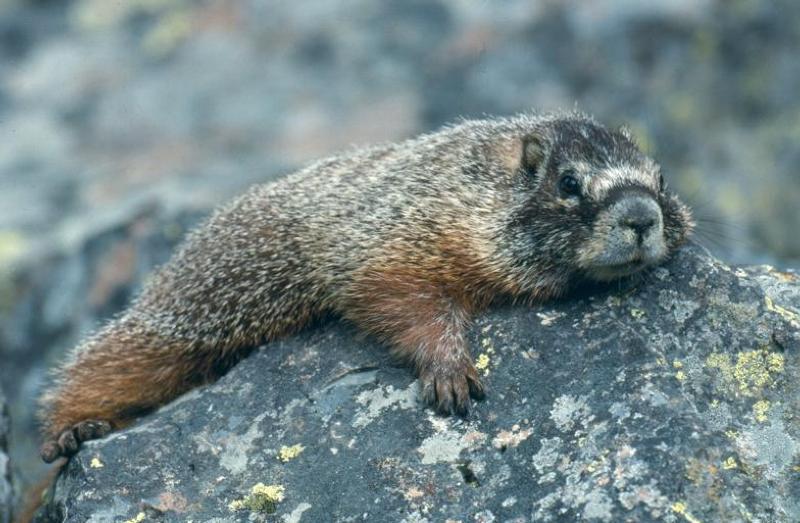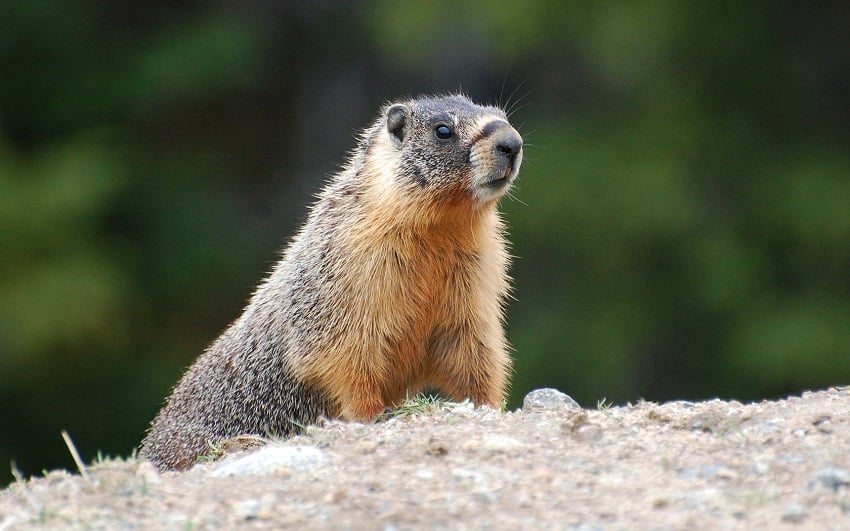Marmots (otherwise known as Groundhogs, Woodchucks, and Whistle-Pigs, among others) have become an increasing problem in the Okanagan over the past few years, and populations are expected to continue to rise. There were days last spring where every second phone call was a marmot call; and one of our technicians tallied over 200 marmot captures in a single spring season! These hungry rodents are everywhere, folks!
To see what I mean check out these story’s from local cities battling with Marmot populations, such as in Vernon and Princeton, BC.

When it comes to Marmots in B.C. ...
There are 4 different species of Marmots that are native to BC (the Hoary Marmot, the Yellow-Bellied Marmot, the Vancouver Island Marmot, and the Groundhog), but the one we’ve been seeing pop up most consistently for Okanagan property owners is the Yellow-Bellied Marmot. Marmots begin actively mating immediately following the end of the hibernation period in the early spring; and under good conditions, Marmots can live for up to 15 years.

What do they eat?
This hungry plant eater loves to feast on grasses, flowers, seeds and nuts – so gardens and yards provide an ample feeding ground for this gluttonous rodent. They are known for being binge eaters, and they will seek out food by any means – they can climb, burrow, or swim to find their way to food; and an adult Marmot consumes about a pound to a pound-and-a-half of vegetation daily. And what do they like to eat? Some of their favourites include alfalfa, clover, peas, beans, lettuce, broccoli, flowers and tomatoes. Between spring and fall they will double their body weight. The reason for this? To store up fat for the months of hibernation during the winter.
Aside from being damaging little pests, marmots can also carry a bunch of nasty things like ticks that cause Lyme Disease, or Rocky Mountain Spotted Fever. It is also possible for them to be carriers of hantavirus or rabies. In other words, it is best to steer clear of Marmots if you do encounter them and leave this one to the professionals.
The gist is, they can damage your lawn, dig under foundations and can transfer parasites. So if you think you've got Marmots taking up residence on your property, it's time to serve them an eviction notice!

Can I get rid of them?
Yes, there are steps you can take to get rid of them. It won’t be easy, but if you’re diligent you may just send them packing!
1. Make sure you’re not making your property attractive to them. Remove old wood and stumps they will use to gnaw on to keep their teeth filed down. Make sure fences are at least 3 feet high and made with heavy-grade chicken wire and buried at least 10 inches below ground.
2. Plant a food source just for them away from your plants. They really like alfalfa and clover. This might be enough to keep them away from your garden.
3. Apply repellents to deter them. Hot pepper spray and talcum powder are good ways to keep them away. You can also use coyote urine as a repellent which is helpful at certain times of the year.
4. Harass them. Keep filling burrow entrances to annoy them. Try spreading molasses at the entrance to the burrow. They will avoid it because they don’t like to get sticky. Set up motion-activated sprinklers to blast them with water. Your efforts will need to be continuous and concentrated to be effective.
how to tackle stubborn marmots?
Finding and treating the marmots can be challenging, especially if they are spread over a large area. Our pest management professionals provide their expertise to identify the pest problem and determine the best possible solution to resolve your marmot infestation. As Marmots are listed under ‘Schedule B’ as per the Ministry of Environment, Yellow-Bellied Marmots are considered a protected species in BC – removing them involves live trapping, and relocation. Our locally trained experts have the education, equipment and skills necessary to effectively track and capture these destructive little pests.


